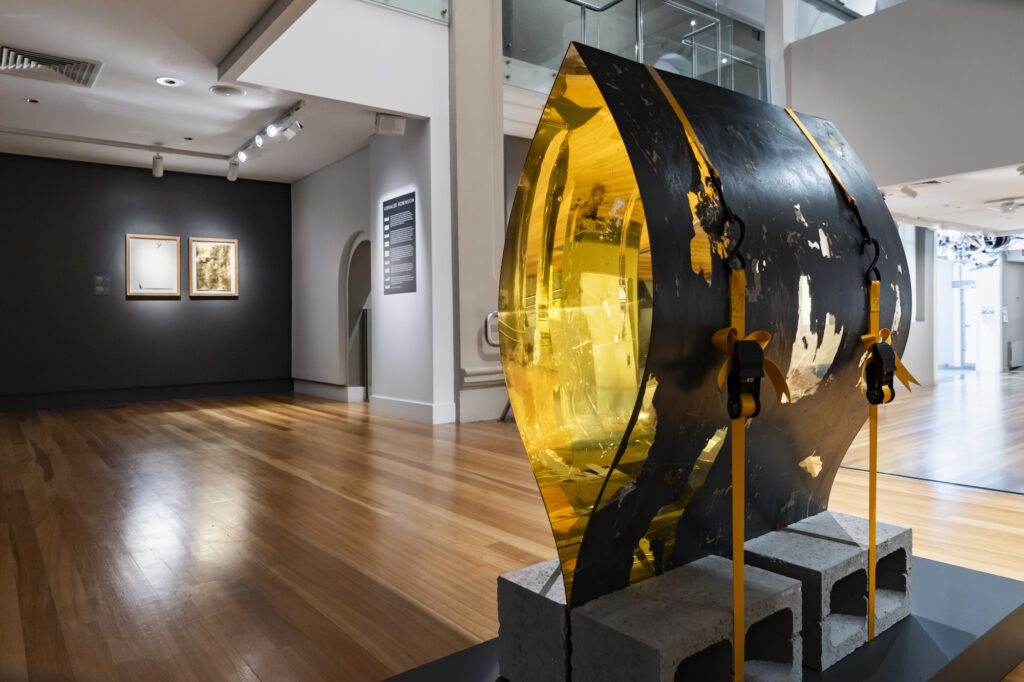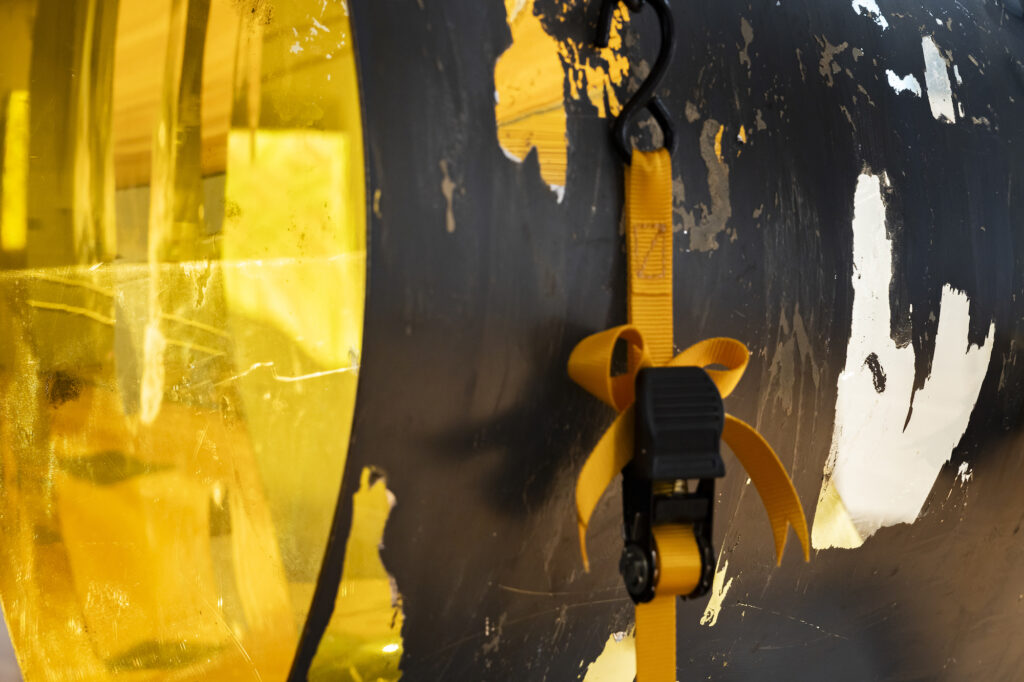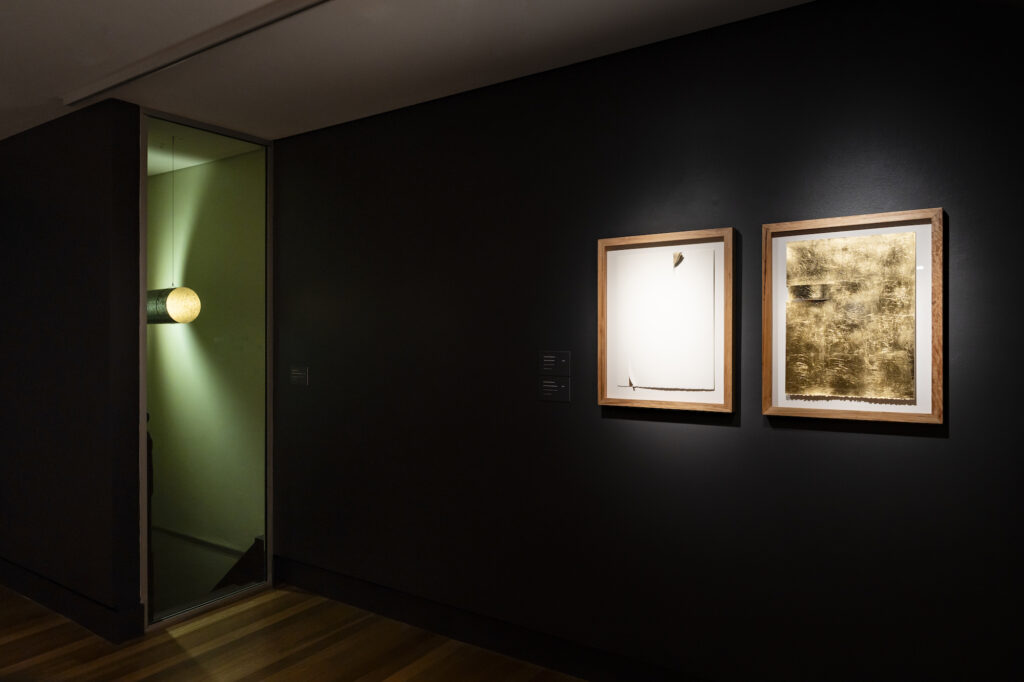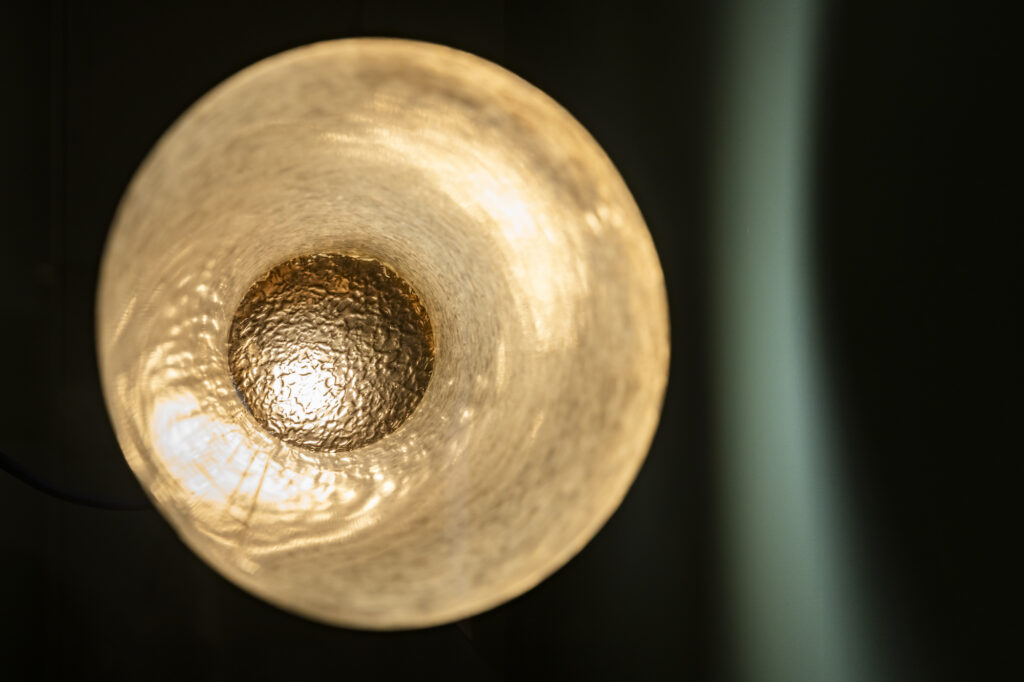
When Kirralee Robinson spoke, in her artist talk, about being a Trekkie since she was a teenager, my little nerd heart jumped with joy. In turn, as a lover of sci-fi films and TV shows, including Star Trek, her exhibition inspired me to think of the twisting, metallic forms and use of liminal space inherent to the genre. With curling metals, strategically placed mirrors, and a large pipe sculpture reminiscent of a disco ball, entitled Scoping Mechanism (don’t call Dave) (2024), the whimsical evocations of spacecraft in the exhibition weren’t lost on me.

Elsewhere is mixed-media artist Kirralee Robinson’s new exhibition at Ipswich Art Gallery. Robinson is from Tulmur, Ipswich; now based in Meanjin, Brisbane; and is a former volunteer and staff member of the gallery. The depth and nostalgia of this professional relationship is referenced in the works, alongside Minimalism, Futurism, feminism and sustainability. Kirralee also explores the female body, the idea of portals, and the hidden potential of often undervalued everyday objects.
On 26 May, I attended Kirralee’s artist talk at Ipswich Art Gallery. She explained the gallery’s building has a rich history as a working theatre and is now heritage listed. This was an important detail in a wide-ranging and informative discussion about her values and her work at the gallery, including conversation around the use of parts from the heritage-listed building that she incorporated into her artworks. Moreover, the talk made clear Kirralee’s passions for conservation, history, and women’s experiences.

Elsewhere evolved over several months of research into values surrounding our relationship with everyday objects; the easy social disregard of waste; and the relationships between consumerism, eco feminism, and the female form. Emerging rom this research, one of the exhibition’s key pieces, staged in its centre, is made of found acrylic that has been manipulated with ratchet straps and concrete blocks to form a diamond-shaped tunnel. While appearing dark and coppery on the outside, the interior of Space Junk (2024) is a striking and reflective gold, beckoning the viewer to peer inside. Many of the exhibition’s artworks comprise found, recycled, or upcycled materials from house renovations and building sites, and this was one of them. It was like a shining beacon at the heart of the show: its shape boldly and assertively feminine, as Kirrallee noted in her artist talk.
The gallery was deliberately arranged sparsely. Each sculpture occupied its own space, with ample room between each allowing viewers a 360-degree view. This was accompanied by a simple didactic at the beginning of the exhibit and artwork labels restricted to brief medium descriptions. For introductory art audiences, this restrained text may present some difficulty—requiring that visitors begin at the ‘start’ of the show—however, this is counterbalanced by the interactivity of the works themselves, which easily garner audience attention.


The gallery’s theatrical history is referenced most strongly in Complete Internal Reflection, (2024) which was created from zinc, galvanised steel pipe, cast poly (methyl methacrylate), lighting gel, and LED lights. The staging space of the gallery building was incorporated into this work as the project progressed. On the final day of installation, Robinson requested to include this portal-style piece in the show. She positioned the portal section of the sculpture to look down a preserved stairwell where actors once moved between the dressing rooms beneath the theatre. The artwork was presented in proximity to text, including a quote on a clear panel, and provided a twofold viewing experience of reading the words and then looking down into the stairwell. Complete Internal Reflection is a highlight of the exhibition for its three-dimensional impact and ability to connect worlds: past, present, and futuristic.
I went through Elsewhere twice, once before Kirralee’s artist talk and again afterward to look at each of her works. In each visit, I was taken into a world of imagination and was delighted by the juxtapositions at play: from the contrast of rich, metallic colours and sparkly disco ball effects to grungy recycled metals and other found building materials. I also enjoyed the experience of movement inherent to many of Kirralee’s sculptures. To properly view the artworks, audiences collectively bend and twist to peer into mirrors and look down pipes, to find messages written on objects, to explore all of the different angles of each sculptural installation. This bodily experience of art allowed for a sense of connection with the works, creating a lasting impression beyond my physical experience of the exhibition, and I continue to reflect on the exhibition’s melting pot of kinetic, emotional, and political experiences.
Ophelia Novak @ophelianovakartist is a writer, anthropologist, and performance artist from Meanjin/Brisbane.



